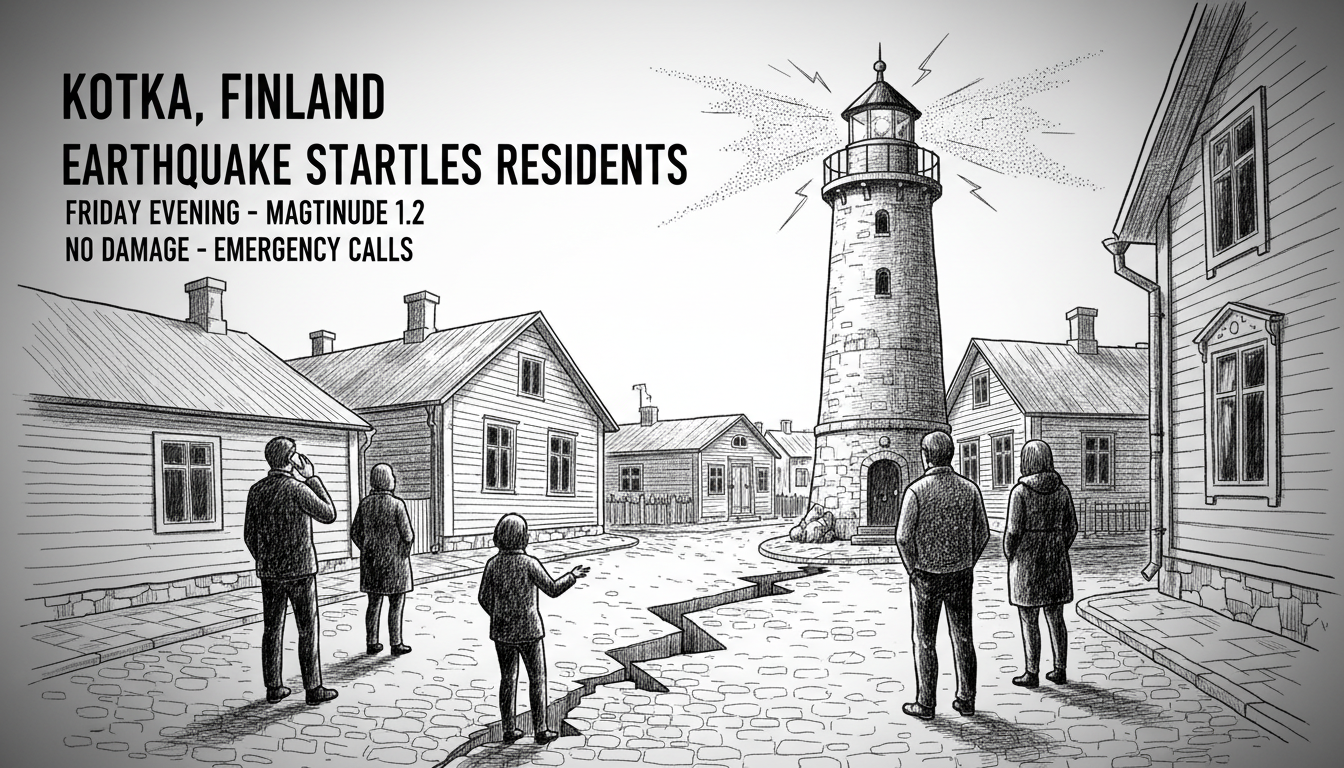A minor earthquake rattled the coastal city of Kotka in southeastern Finland late Friday evening, startling residents and prompting multiple emergency calls. The seismic event occurred just before 11 PM local time, registering a magnitude of 1.2 on the Richter scale according to the University of Helsinki's Seismology Institute. Residents reported hearing a loud bang and feeling noticeable vibrations throughout the area.
Local emergency services confirmed they received several concerned calls about the earthquake but noted no actual rescue operations were necessary. The seismic activity was centered around Kotkansaari, the main island district of Kotka. While earthquakes of this magnitude rarely cause structural damage, they can be particularly noticeable in Finland's stable geological environment.
Finland experiences approximately 10-20 detectable earthquakes each year, though most are too weak to be felt by residents. The country sits on the ancient Baltic Shield, one of the most stable geological formations in Europe. This stability makes even minor seismic events like Friday's earthquake particularly memorable for local residents.
Earthquake safety experts note that while Finnish buildings are constructed to withstand much stronger seismic activity than typically occurs in the region, awareness of proper safety procedures remains important. During an earthquake, residents are advised to stay indoors, move away from windows, and take cover under sturdy furniture if shaking becomes intense.
The Uusimaa and Kymenlaakso regions where Kotka is located have experienced several minor earthquakes in recent years. Geological surveys indicate these are typically caused by glacial isostatic adjustment - the gradual rising of land masses that were compressed by ice age glaciers thousands of years ago. This ongoing geological process occasionally releases built-up stress through minor seismic events.
For international readers living in or visiting Finland, understanding the country's minimal earthquake risk provides important context. While the Nordic nation is seismically quiet compared to neighboring Norway or Sweden, occasional tremors serve as reminders of the dynamic geological processes shaping Scandinavia's landscape. The Finnish seismic network continuously monitors such activity, providing real-time data to both scientists and emergency services.

